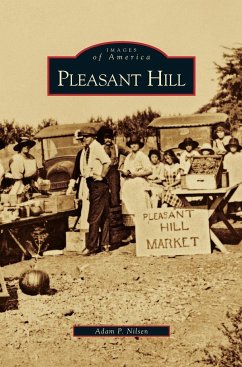A community leader described Pleasant Hill on the eve of its incorporation in 1961 as "a dozen subdivisions looking for unity." Pleasant Hill had previously been a loosely knit farming community on land first inhabited by the Ohlone Indians and later by Mexican rancho owners. Many heard the call following World War II to come to Pleasant Hill for a "modern" and "western" life. The hallmarks of suburbia--tract houses with sprawling lawns, tree-lined boulevards intersecting neatly mapped lanes, and strip malls for one-stop shopping--grew in abundance as young families flocked to this San Francisco Bay Area community. At the same time, pieces of its rural past stood in contrast to the new development. Walnut trees grew next door to the drive-in movie theater, abandoned railroad tracks ran beside the freeway, and sunbathers spied barnyards from their backyards. Such contrasts remain, and community groups continue to celebrate Pleasant Hill's history as the city's identity continues to change.
